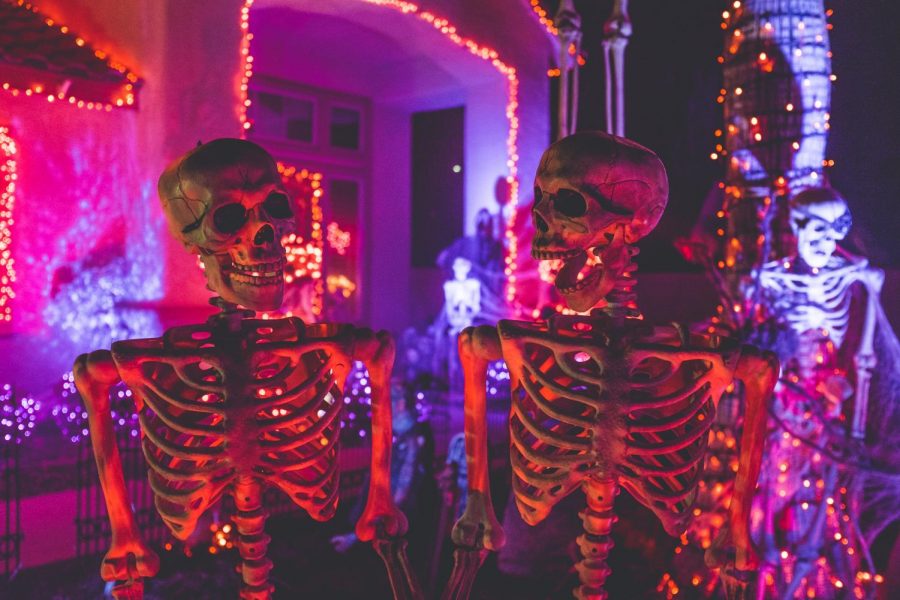(Un)holy Evening
October 30, 2020
Halloween is a holiday that Americans celebrate every year on October 31st, but do most know the true meaning of Halloween? Do you know why it is a tradition or where it came from? So many people celebrate the holiday and don’t even know how it started or what it means, so this is where you can find everything out.
The tradition of Halloween originated with the ancient Celtic festival of Samhain, which is a pagan religious festival of spiritual tradition. People would light bonfires and wear costumes to keep ghosts away. November 1st, the day after Halloween, was something that Pope Gregory III designated in the eighth century as a time to honor all saints. The evening before was called and known as “All Hallows Eve,” later on known as Halloween. As time went on, Halloween turned into a day of festive gatherings, wearing costumes, trick or treating, eating candy, and carving jack-o-lanterns.
Celts, who lived 2,000 years ago, celebrated their new year on the first of November. They were mostly in the areas that we know as Ireland, the United Kingdom, and northern France. November 1st, the Celts’ new year, marked the beginning of the dark and cold winter. This time of year was often associated with death, and it was believed that the day before, on October 31st, the ghosts of the dead returned to Earth. So, the Celts would celebrate Samhain on the night of this date.
Druids, which are priests, magicians, or soothsayers in the ancient Celtic religion, built big sacred bonfires where people would gather to burn crops and animals as sacrifices to the Celtic deities. During the celebration and tradition, the Celts would wear costumes, which were usually animal heads and skins, and they would try and tell each other’s fortunes. After the celebration would end, they would relight their hearth fires that they would extinguish earlier in the evening to protect and comfort them for the winter that was just around the corner.
In 609 A.D., on May 13th, Pope Boniface IV dedicated the Pantheon in Rome to honor all Christian martyrs, people who had been killed for their Christian beliefs. Later on, he then included all saints and martyrs for the festival and moved the date for it from May 13th to November 1st. Over time, by the 9th century, the influence of Christianity had spread into Celtic lands. Then in 1000 A.D., November 2nd was made into All Souls’ Day, which was a day to honor the dead. All Souls’ Day was celebrated with parades, big bonfires, and dressing up in costumes as saints, angels and devils. The celebration was similar to Samhain. The All Saints’ Day was a day celebrated in honor of all Saints and to visit tombstones to honor the memory of deceased relatives. It was also called All-hallows or All-hallowmas. The night before All Saints’ Day, the night of tradition of Samhain in the Celtic religion, began to be called All-Hallows Eve, and eventually, Halloween.
An American version of Halloween began to come later. The first celebrations had “play parties,” which was where neighbors would share stories of the dead, dance, sing, and tell each other’s fortunes. There was also ghost story telling that was included, and other spooky things came into play later on. Halloween had always been a magical, superstitious and mysterious holiday, and it had begun as a beginning-of-winter Celtic festival when people felt close to deceased loved ones. They would leave treats on doorsteps and along the side of the road along with lit candles to try and help their dead loved ones back to the spirit world. Well, look at all of us now, with the majority of us not having a clue about any of this.

